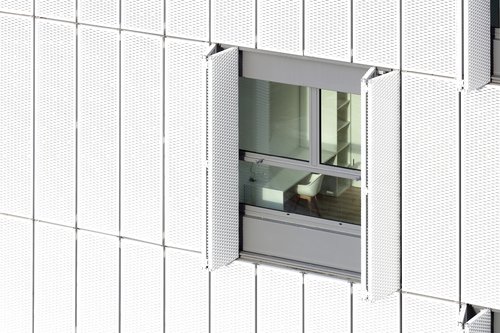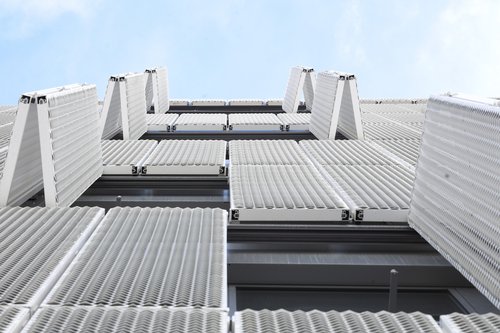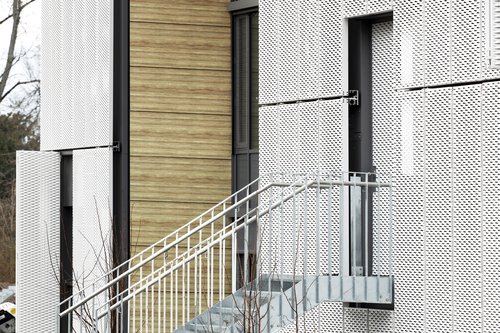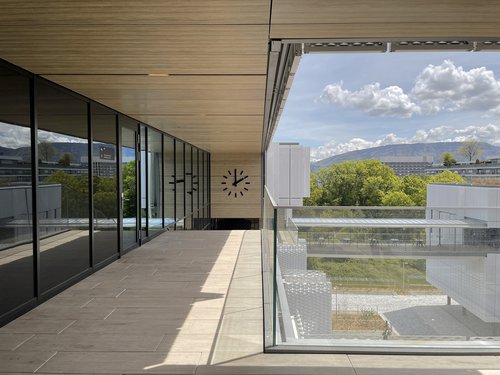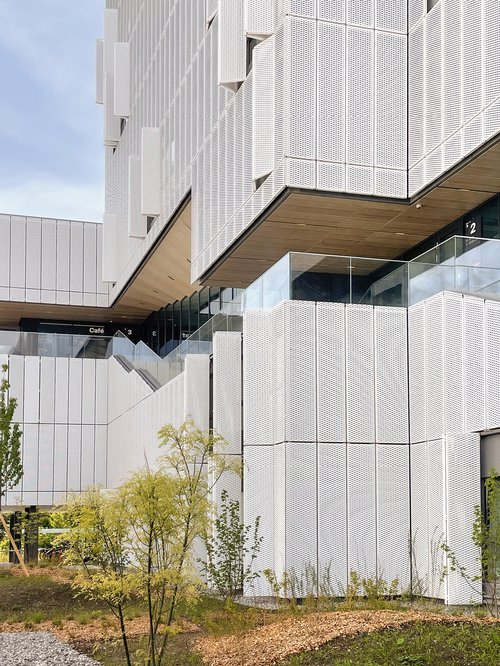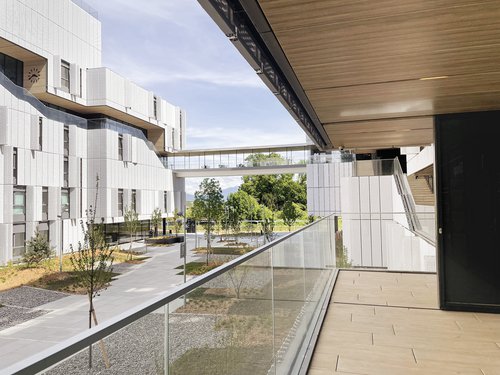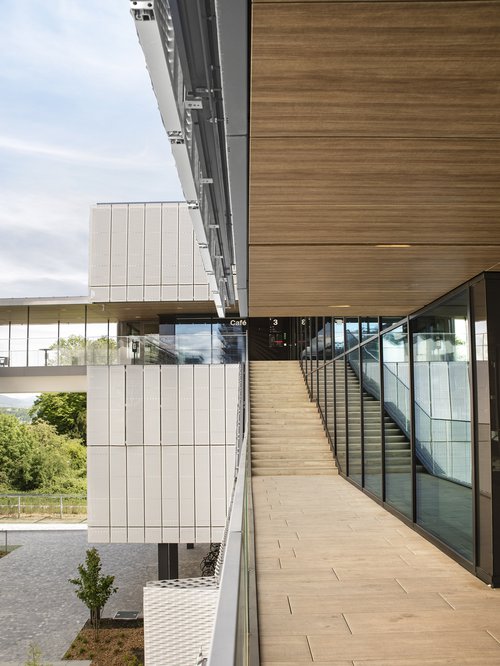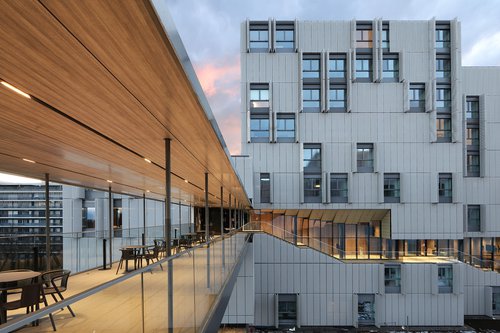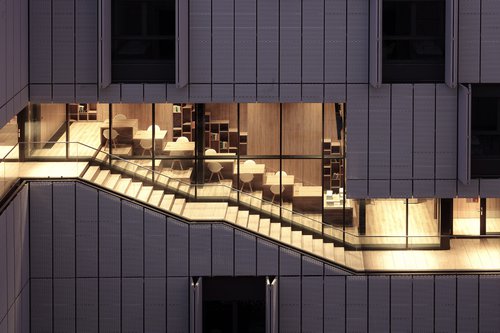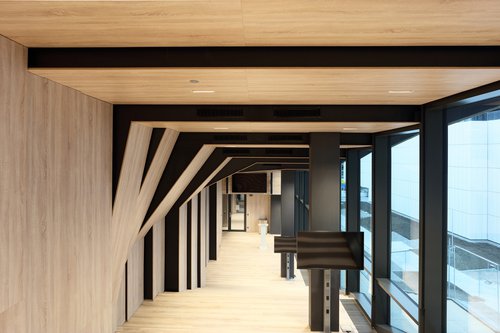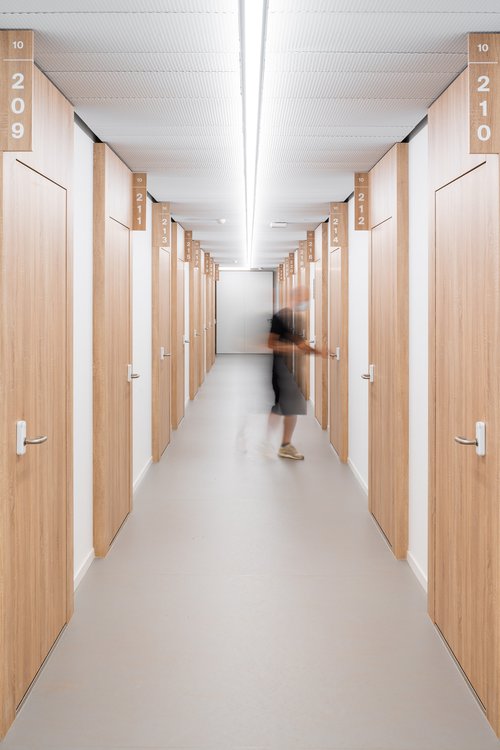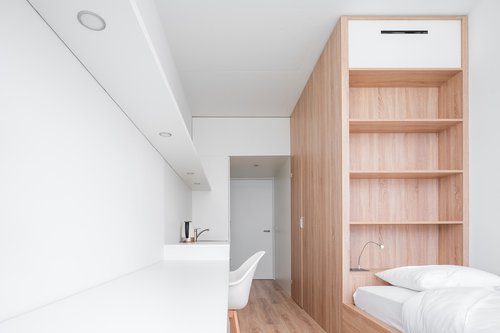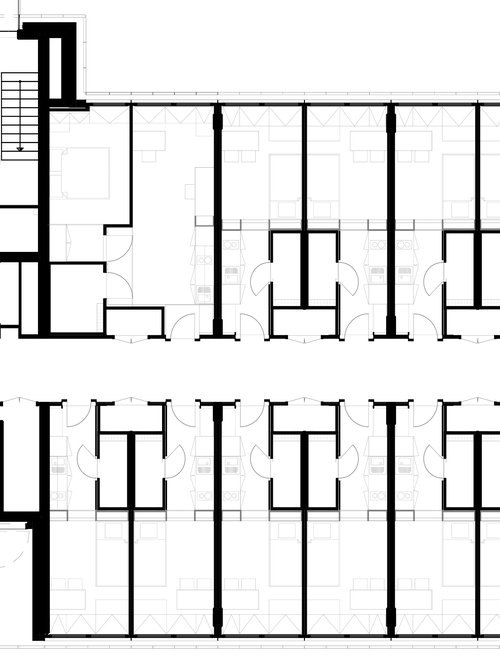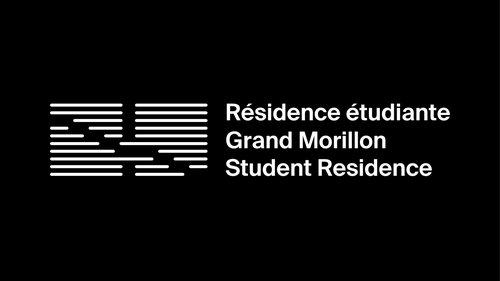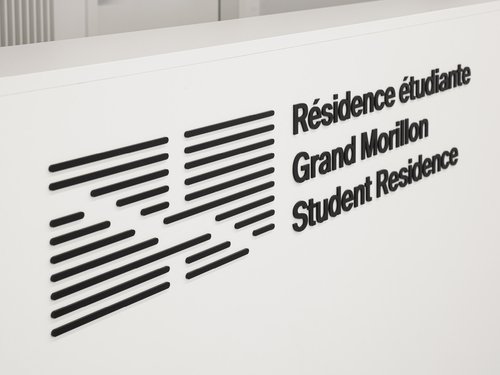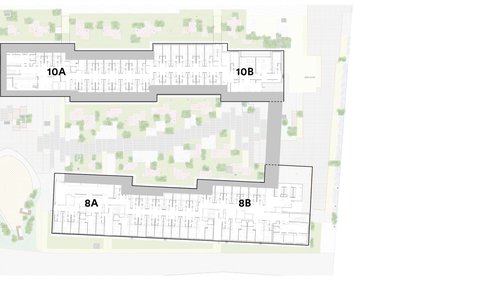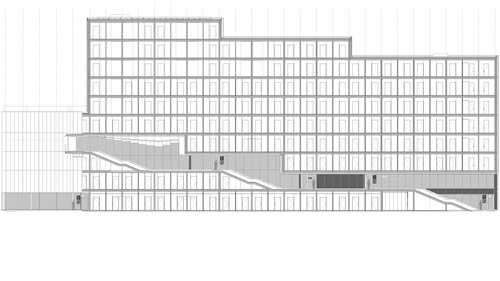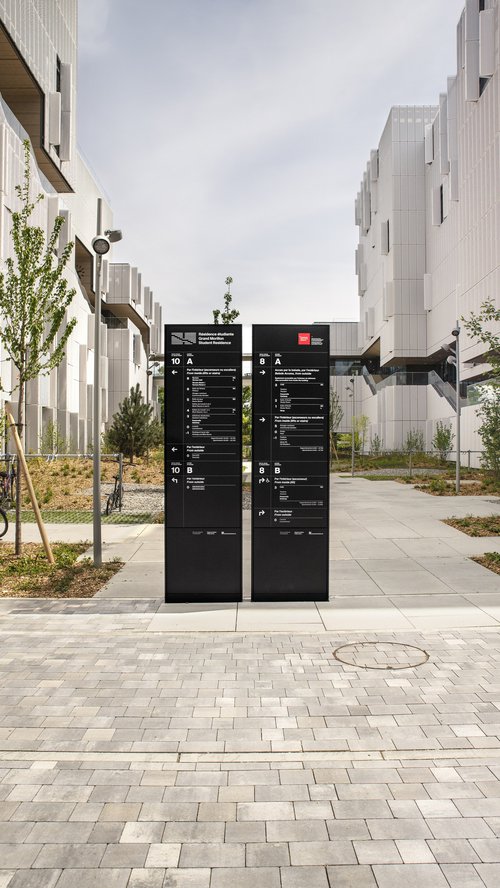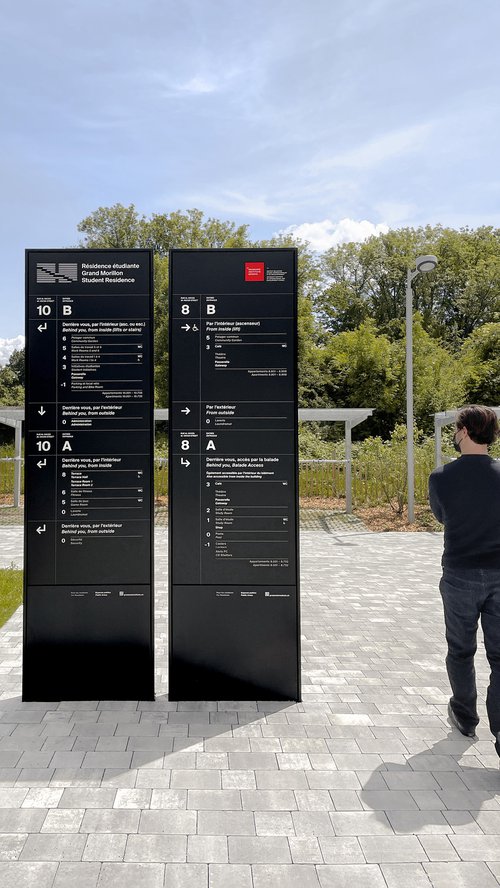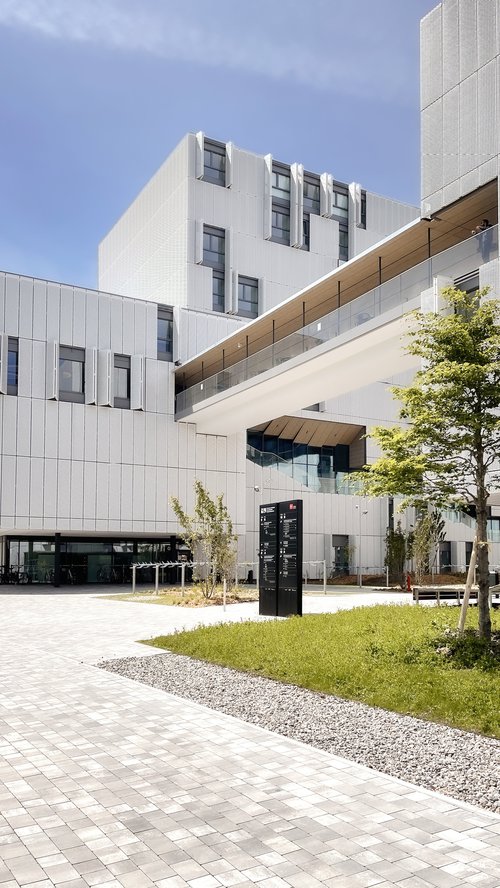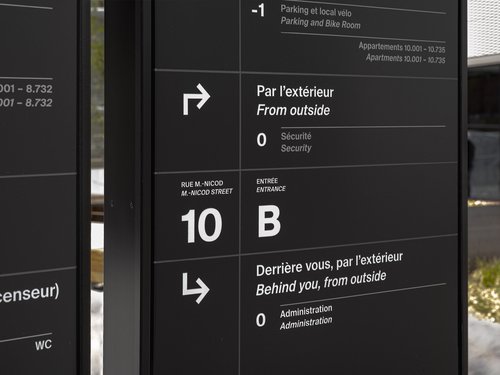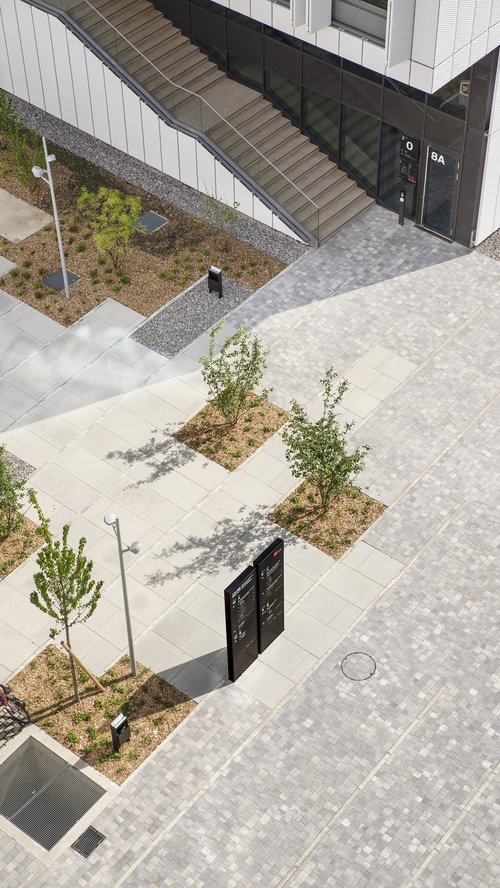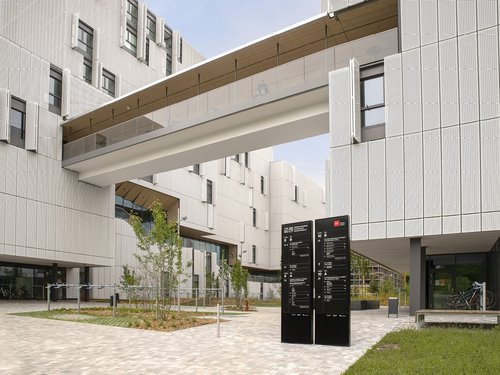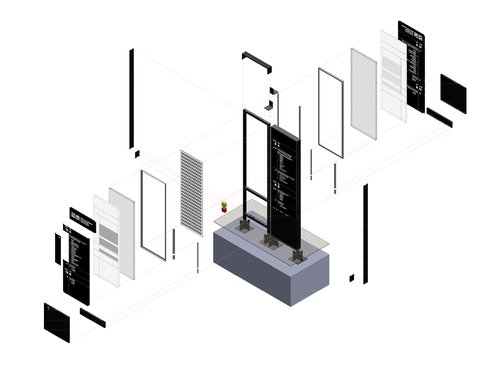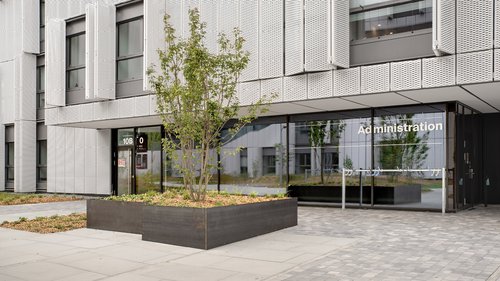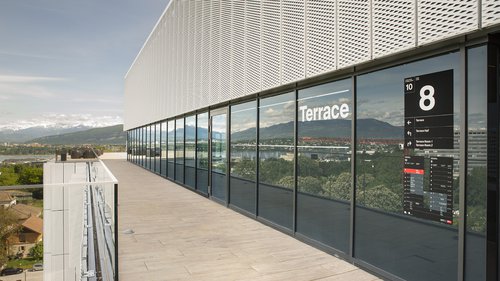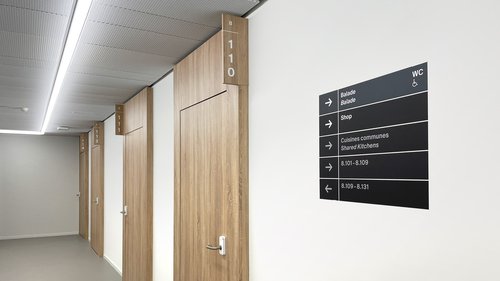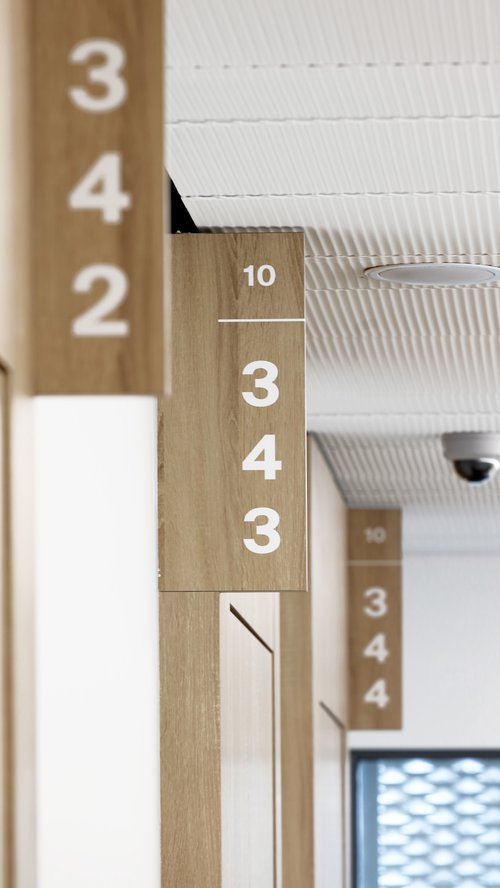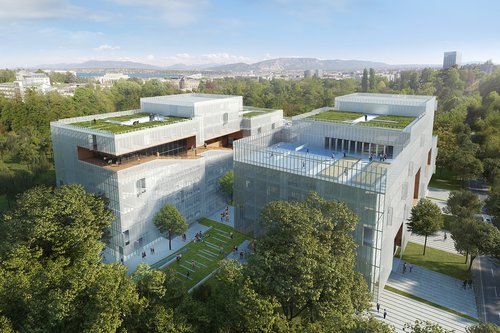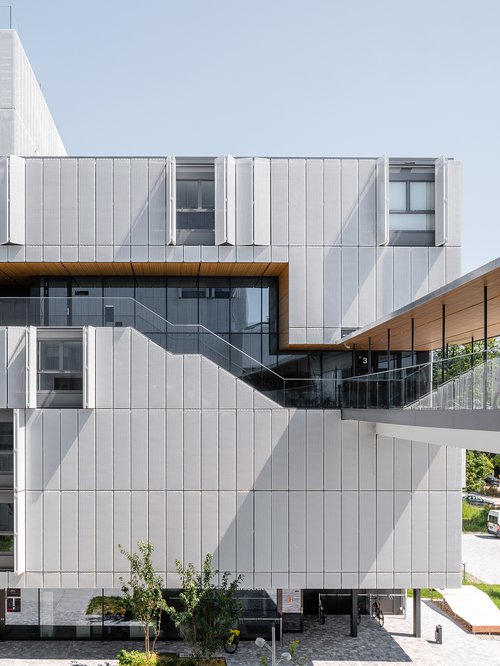
The Grand Morillon residence houses the students of the Graduate Institute of International and Development Studies - IHEID. Located in the Nations district of Petit-Saconnex, this building is composed of two bars facing each other, linked by a footbridge. The residence offers accommodation for international students with services totalling 670 beds as well as a set of common spaces and activities.
At the top, there is a multi-purpose room that opens onto a panoramic terrace with a breathtaking view of the Palais des Nations, the Geneva harbour and its water jet and the Alps.
A gradual walkway cut into the façade links the buildings from bottom to top. A true meeting place for the occupants, this walkway in wood tones contrasts with the façade entirely clad in aluminum and glass. Along the promenade, there is a shop, workrooms, an auditorium, a restaurant, a fitness center, and a relaxation room.
Sliding shutters of 3.6m make up the metallic façade of the complex and allow the regulation of the luminosity and the privacy of the living spaces. Depending on the time of day and the activities of the students, the façade undergoes a visual change with the shutters open, half-open or closed.
The interior spaces use the warmth of wood in contrast with grey and white colors. Integrated into the public areas, the 630 or so student residences are a reduced model of the architectural concept. With a distinctly Japanese inspiration, these easy-to-live-in apartments are fully equipped in shades of wood and white. Every detail is designed to be sustainable and to optimize the space, such as the bench installed at the foot of the windows, which serves as a seat for the dining table, a relaxing sofa, a storage box, and a support for opening and closing the windows and giant shutters.
The different types of accommodation are designed to evolve according to the needs of the Institute. The basic unit is the "studio" and is designed for students who appreciate a community lifestyle, which is why it works in conjunction with shared kitchens, strategically located to group fifteen to twenty studios. The "studio plus" is equipped with a private kitchenette and offers an advantage to users seeking more autonomy. The "couple's apartment" combines two modules, is accessible to people with reduced mobility and has a living space separate from the sleeping area.
Finally, the "two-room and three-room apartments" are aimed more for families and can also be occupied by students sharing a common living space. All the apartments are designed and arranged to optimize the available space as much as possible. Finally, these units are equipped with a bench against the facade to act as a space of relation between the interior and the exterior, while integrating storage lockers.
The proposed system was based on our support to the project owner in the definition of all the appellations necessary for the proper functioning of the site and its understanding: it stems from our findings and our bias, aiming to simplify the information network as much as possible.
Choices
From the first step until the arrival at the desired destination, the visitor is informed at all times of his position in the site and the areas to which he has access.
Distinguish between public space (white) and areas dedicated to residents (gray)
From the square, inform and direct to the right entrances
Down to the tiniest detail
Whether it is a question of adhesive interventions or built elements, the care taken with the finishing touches enables the architectural quality to be up to scratch while guaranteeing the durability of the signage system put in place for possible future information updates.
images from the competition
